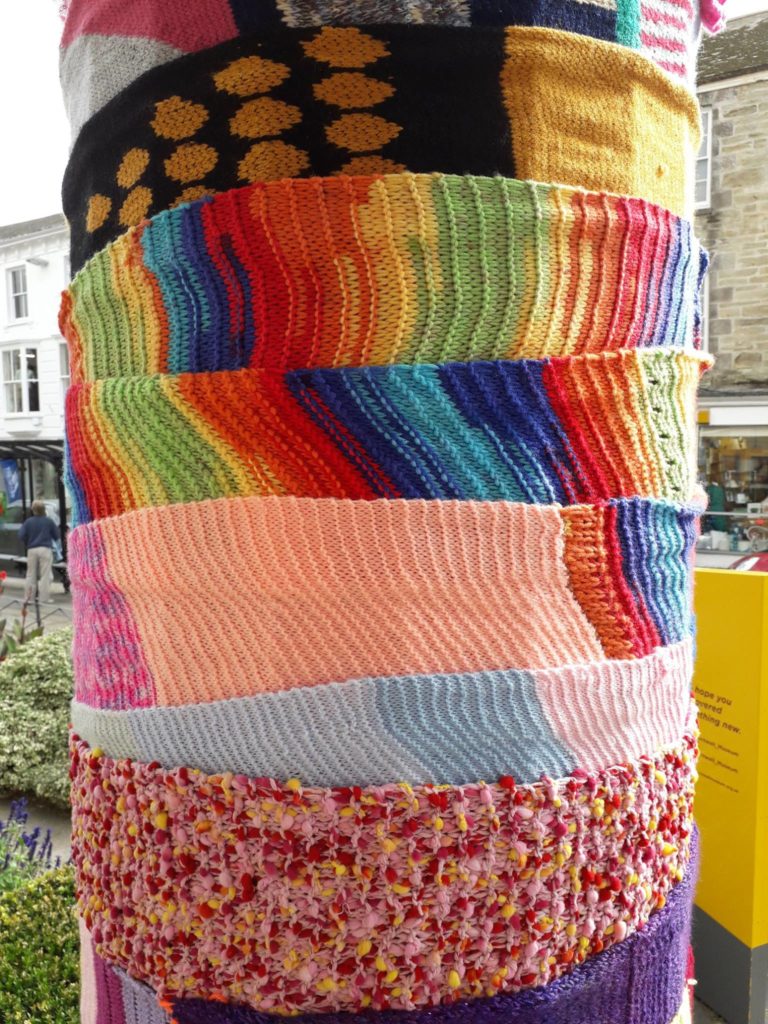Celine Elliot is the Fun Palaces Ambassador for Cornwall, which she does for one day a week as part of her job at the Cornwall Museums Partnership. In 2018 she made a Fun Palace at the Royal Cornwall Museum in Truro. Here she shares her story of embarking upon a Fun Palaces project that took her and members of her community on a journey over many months and played a part in welcoming new visitors to the museum.
“I was working as a Community Engagement Officer at the Royal Cornwall Museum, and one of the things I took on in this role was trying to soften the appearance of the museum, it’s a very traditional building: two pillars and a rectangular porch; a big grey building, which doesn’t always look that welcoming. I’m interested in something that’s known as threshold anxiety; which is the thing that stops people going in to museums, galleries or other cultural institutions. It’s very hard to navigate as it disappears almost as soon as people overcome it, but has a big impact on who our audiences are. A lot of our buildings look like banks, and might make certain people feel uncomfortable to venture through the doors, although staff inside them really want to welcome those people into the building. I’m not sure why when our museums are on the high street, we don’t do more with their appearance in the way shops might do with theirs. If you look on a high street, the shops are constantly changing their windows, showing what they’ve got inside, being really clear about what to expect, which in itself is really welcoming. But in contrast to that, museums and galleries can often be really impenetrable and off-putting.
So one of the ideas we had was to do something with the pillars, and I had the idea that we could try and yarn bomb the front of the museum. Around the corner from the museum is the Truro Community Library and I found out that a group called The Material Girls meets in that library; an amazing bunch of women who are very talented at crochet and knitting, who gather once a week to do just that. So I visited them one week, and asked if the idea of yarn bombing the museum was a possible thing; they completely understood the concept, took this idea and ran with it. They decided that each person would knit a regular scarf, but then they’d stitch them all together and wrap them around the pillars. This was in June, and we aimed to have it done by the Fun Palaces weekend in October, to have it up as a point of attraction, but with the idea that some of the Material Girls would come to the museum and teach people how to knit and crochet, as part of our Fun Palace. So it linked the inside and the outside.
It worked really well; as soon as we put the scarves up on the Fun Palaces weekend, people were coming in from the high street and engaging with the building in a way that they hadn’t before. The skills sharing that the women did was a really popular part of the Fun Palace, a lot of people came and joined in.
I think sometimes institutions might have the building, but not the people or the skills that bring the engagement, and that’s where we can look to our local communities to find those things.
Then after the weekend, we wanted there to be an accession; to add one of the scarves to the museum collection to commemorate that initiative, so we did, but then came the question what did we do with remaining 120 feet of scarf? At that point we got in touch with St Petrocs, a local charity working with people experiencing homelessness and we asked if there would be any way we could get them involved. Every year they do a count of the people living on the streets of Truro, they then provide everyone with a survival kit for the winter. That year a scarf from the museum went into each kit.
It was a circular project that met lots of different people’s needs, in a really lovely way.
And what was great was that it was a relatively resource light project, in that people used up the leftover bits of wool they had at home; so it was quite green in that respect. I’m always trying to find a way for museums to be useful to their communities and meet their needs, and if they can do that in a regenerative and economical way, even better.”



